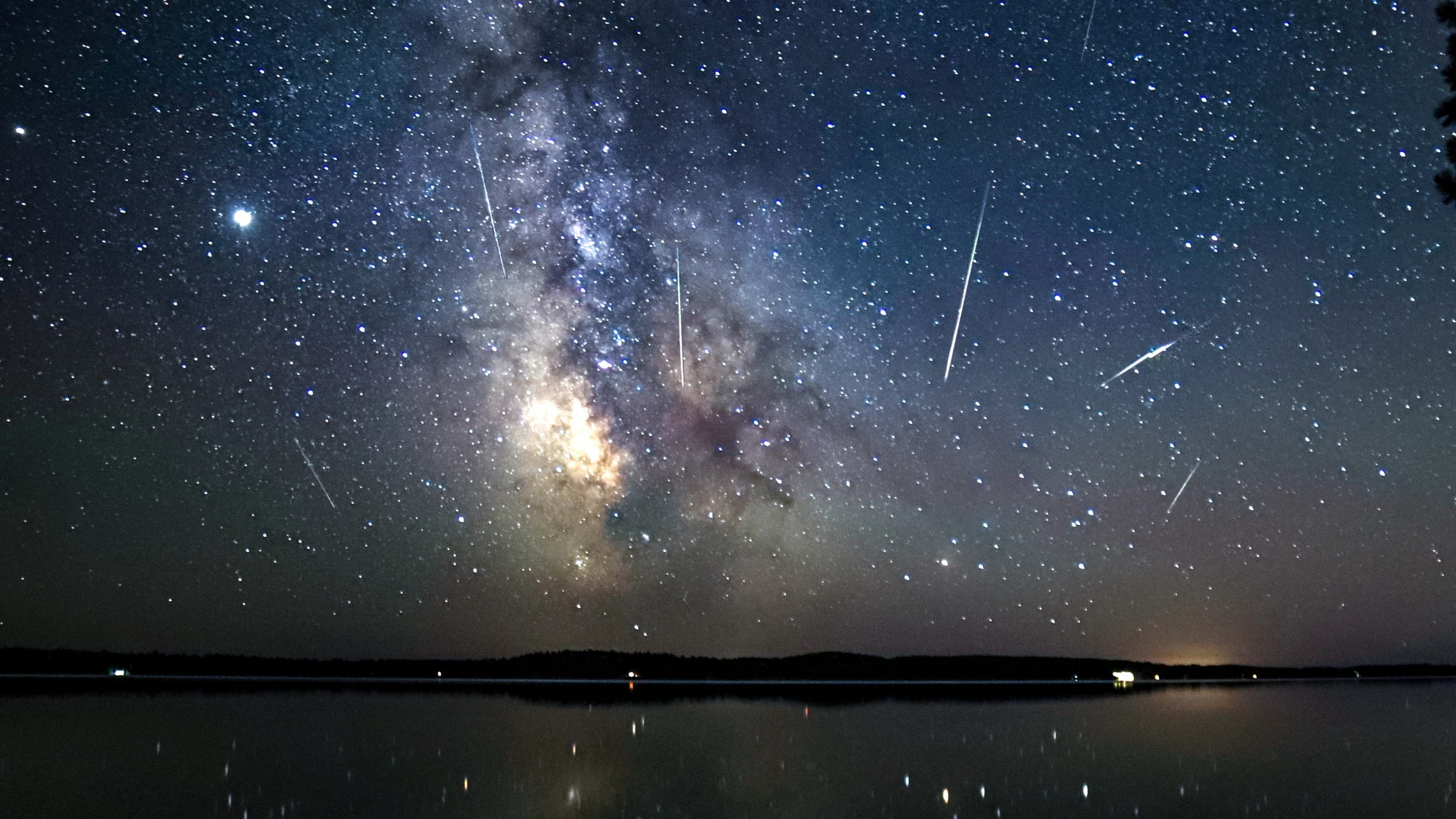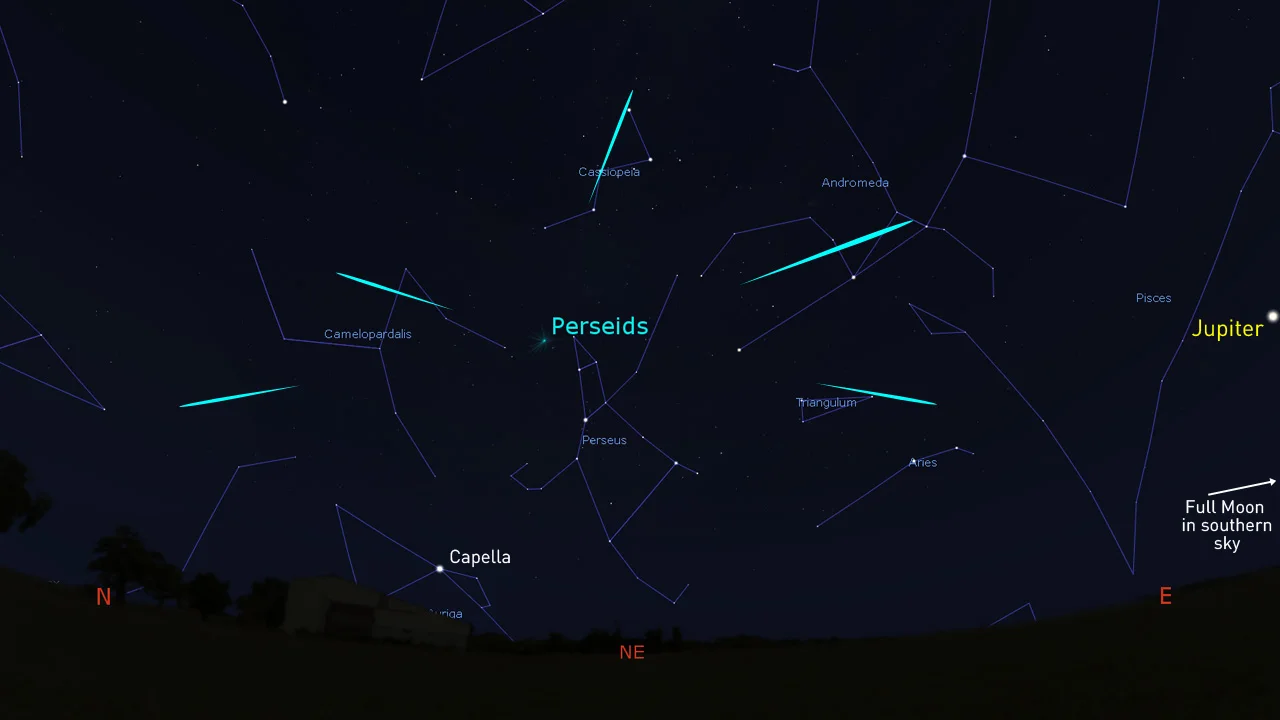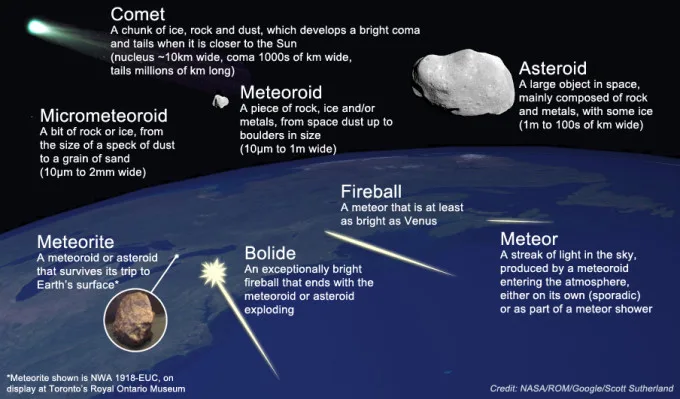
The best time to watch the Perseid meteor shower may be now
Don't wait! The Perseids haven't reached their peak yet, but if you wait until then, you may not see as good of a show!
The peak of the Perseid meteor shower is coming up later this week, but due to the Moon, now may be the best time to go out and see it!
Every year, towards the middle of summer, a display of bright flashes lights up our night skies. From mid-July to late August, Earth passes through a trail of icy debris in space, left behind by a comet known as 109P/Swift-Tuttle. Discovered in 1862, Comet Swift-Tuttle passes by Earth every 133 years, and since its last pass in 1992, it is now far out in the solar system, beyond the orbit of Neptune. Still, each year we receive a reminder of its existence in the form of the Perseid meteor shower.

The location of the Perseids radiant — the point in the sky the meteors appear to originate from — at midnight on August 12-13. Credit: Stellarium/Scott Sutherland
Among the dozen or so meteor showers we see each year, the Perseids stand out as one of the strongest and brightest of all. During its peak, which typically occurs on the nights of August 12 and 13, viewers from dark rural areas can witness a spectacular display in the night sky.
According to the Canadian Space Agency: "During the peak, typically in the darkest hours after midnight, up to 50 to 80 meteors per hour can streak across the sky. To be even more specific, look up at the sky between moonset and dawn to see the most meteors of the night."
However, this year, don't wait for the Perseids to peak! Instead, go out in the days before the peak to see the meteor shower because the view will get worse and worse throughout the week due to the Moon.

The phases of the Moon leading up to the peak of the 2022 Perseid meteor shower. Credit: Scott Sutherland/NASA's Goddard Space Flight Center
Light pollution from urban illumination (street lights, signs, vehicles, etc.) is particularly bad for spoiling meteor showers. The bright lights in our field of view disrupt our night vision, making it difficult to see the flashes of light as they streak across the sky. So, be sure to get out of the city to find the best viewing (more tips below). It's not just these artificial light sources, though. The phase of the Moon can make or break a meteor shower display. The best viewing is during a Crescent or New Moon. The worst is when the Moon is full.
This year, the Full Moon is on the night of Thursday, August 11. When the Perseids peak on Friday night, the light from the nearly-full Moon will still be bright enough to wash out most of the dimmer meteors.
The best time to check it out may be right now, though.
We are still approaching the densest part of the meteoroid debris stream from Comet Swift-Tuttle. Thus, the number of meteors is ramping up throughout the week. Viewers that are watching from under clear, dark skies may see a meteor a minute, if they avoid light pollution and give their eyes ample time to adjust to the dark (see below).
The Moon's light can still wash out the dimmest meteors from the shower, so watching in the earlier hours of the night, turn your gaze to the north to keep the Moon out of your line of sight. The hours before dawn are best to catch the 'moonless' times of the night for viewing.
Watch below: Perseid fireball captured on NASA camera
Tips for viewing meteor showers
Meteor showers are events that nearly everyone can watch. No special equipment is required. In fact, binoculars and telescopes make it harder to see meteor showers by restricting your field of view. However, there are a few things to remember so you don't miss out on these fantastic events.
The three best practices for observing the night sky are:
Check the weather,
Get away from light pollution, and
Be patient.
Clear skies are essential. Even a few hours of cloudy skies can ruin your chances of watching an event such as a meteor shower. So, be sure to check The Weather Network on TV, on our website, or from our app, and look for my articles on our Space News page, just to be sure that you have the most up-to-date sky forecast.
Next, you need to get away from city light pollution. What do you see if you look up at the sky from home? The Moon, a planet or two, perhaps a few bright stars such as Vega, Betelgeuse and Procyon, as well as some passing airliners? If so, your area has too much light pollution to get the most out of a meteor shower. Of course, you might catch an exceptionally bright fireball if one happens to fly past overhead, but that's likely all you'll see. So, get out of the city to get the most out of your stargazing and meteor watching. The farther away you can get, the better.
Watch: What light pollution is doing to city views of the Milky Way
For most regions of Canada, getting away from light pollution is simply a matter of driving outside your community until many stars are visible above your head.
In some areas, especially in southern Ontario and along the St. Lawrence River, the concentration of light pollution is too high. Getting far enough outside of one city to escape its light pollution tends to put you under the light pollution dome of the next city over. The best options for getting away from light depend on your location. In southwestern Ontario and the Niagara Peninsula, the shores of Lake Erie can offer some excellent views. In the GTA and farther east, drive north and seek out the various Ontario provincial parks or Quebec provincial parks. Even if you're confined to the parking lot after hours, these are usually excellent locations from which to watch (and you don't run the risk of trespassing on someone's property).
If you can't get away, the suburbs can offer at least a slightly better view of the night sky. Here, the key is to limit the amount of direct light in your field of view. Dark backyards, sheltered from street lights by surrounding houses and trees, are your best haven. The video above provides an excellent example of viewing based on the concentration of light pollution in the sky. Also, check for dark sky preserves in your area.
When viewing a meteor shower, be mindful of the phase of the Moon. Meteor showers are typically at their best when viewed during the New Moon or Crescent Moon. However, a Gibbous or Full Moon can be bright enough to wash out all but the brightest meteors. Since we can't get away from the Moon, the best option is just to time your outing right, so the Moon has already set or is low in the sky. Also, keeping the Moon out of your direct line of sight will reduce its impact on your night vision and allow you to spot more meteors.

Once you've verified you have clear skies and limited your exposure to light pollution, this is where being patient comes in.
Note that this — more than anything else — is likely the one thing that causes the most disappointment when it comes to watching a meteor shower.
For best meteor viewing, you will need some time to adapt to the dark. Give yourself at least 20 minutes for your eyes to adjust from exposure to bright light. During that time, avoid street lights, vehicle headlights and interior lights, and even your smartphone or tablet screen. Switching your phone into "night mode" helps if you need to check on it while you wait. Also, if the Moon is up, keep it out of your field of view.
You can certainly gaze into the starry sky while letting your eyes adjust. You may even see a few of the brighter meteors as your eyes become accustomed to the dark.
Once you're all set, just look straight up and enjoy the view!
